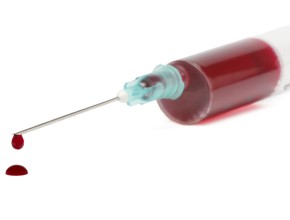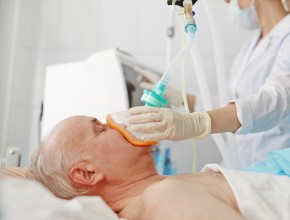Preoperative gabapentin and opioid consumption in spinal surgery
The perioperative use of gabapentin among patients undergoing spinal surgery decreases the need for opioids and improves pain control while increasing the frequency of somnolence.
This meta-analysis included 10 randomized controlled trials involving over 800 patients undergoing spinal surgery. The intervention included gabapentin at doses ranging from 300 to 1,200 mg, given usually 1 to 2 hours prior to surgery (in a couple of cases in divided doses from the evening before surgery to just before surgery or a single dose 2 hours before surgery followed by a single dose 6 hours after surgery).
The total opioid consumption was lower in the group of patients receiving gabapentin, with some evidence of dose-response. Among patients who received 300 mg of gabapentin, the 24-hour morphine use was lower by about 2 mg; for gabapentin doses of 600, 900, and 1,200 mg, the use of morphine was lower by about 6, 11, and 18 mg, respectively. Pain intensity, measured on a 100-point visual analog scale, was lower by about 15 points at 2, 4, and 6 hours after surgery. At 12 and 24 hours postoperatively, pain intensity was lower by approximately 12 and 9 points, respectively. Among potential adverse events, somnolence occurred more commonly in the gabapentin group (16% vs 6%), whereas vomiting (7% vs 14%), urinary retention (14% vs 24%), and pruritus (11% vs 28%) were less common.
USPSTF statement: HRT for prevention of chronic conditions in postmenopausal women
The US Preventive Services Task Force (USPSTF) recommends against the use of hormone replacement therapy (HRT) for the primary prevention of chronic conditions.
The use of HRT (combined estrogen-progestin in women with an intact uterus or estrogen alone in women without a uterus) has been a subject of a long-term debate. In these guidelines, the authors summarized the probable benefits and harms of HRT in terms of the absolute number of events per 10,000 woman-year treatment:
- With combined estrogen-progestin treatment, one may expect 9 more patients with invasive breast cancer (95% CI, 1-19), 8 more women with coronary artery disease (95% CI, 0-18), 22 more women aged ≥65 years with probable dementia (95% CI, 4-53), 21 more patients with gallbladder disease (95% CI, 10-34), 9 more patients with stroke (95% CI, 2-19), and 21 more women with venous thromboembolism (95% CI, 12-33). The risk of urinary incontinence on at least one occasion was increased by about half. With the same treatment, in terms of benefit one may expect 44 fewer fractures (95% CI, 13-71), 14 fewer women with diabetes (95% CI, 3-24), and 6 fewer patients with colorectal cancer (95% CI, 1-9).
- With estrogen treatment alone, the benefits are estimated at 53 fewer fractures (95% CI, 39-69), 19 fewer women with diabetes (95% CI, 3-34), and possibly 7 fewer patients with invasive breast cancer (95% CI, from -14 to 1). In the same group, the potential harms likely include 30 more women with gallbladder disease (95% CI, 16-48), 11 more women with stroke (95% CI, 2-23), 11 more women with thromboembolism (95% CI, 3-22), and possibly 12 more patients with dementia (95% CI, from -4 to 41). The risk of urinary incontinence on at least one occasion was increased by about half.
The authors interpret these data as supporting not using HRT to prevent chronic diseases.
SCCM/ESICM guidelines for diagnosis and management of CIRCI: Part 2. Sepsis, ARDS, trauma
Annane D, Pastores SM, Rochwerg B, et al. Guidelines for the Diagnosis and Management of Critical Illness-Related Corticosteroid Insufficiency (CIRCI) in Critically Ill Patients (Part I): Society of Critical Care Medicine (SCCM) and European Society of Intensive Care Medicine (ESICM) 2017. Crit Care Med. 2017 Dec;45(12):2078-2088. doi: 10.1097/CCM.0000000000002737. PubMed PMID: 28938253.
These guidelines provide recommendations and suggestions (conditional or weak recommendations) on the diagnosis of critical illness–related corticosteroid insufficiency (CIRCI) among critically ill patients and use of corticosteroids in the management of the variety of critical care conditions where CIRCI may be present.
Strong recommendations are issued when most individuals would want the recommended course of action, clinicians should use this course of action in most situations, and recommendations could serve as policy and a performance measure. With weak recommendations (suggestions), the majority of patients would want the suggested course of action but many would not, clinicians should tailor their actions to individual circumstances and patient’s preferences, and the subject of policy may be the consideration of a given intervention rather than its institution. (The concepts of strong and weak recommendations are used according to the GRADE, or Grading of Recommendations, Assessment, Development, and Evaluation, method; see our introduction to the GRADE system).
In this part of the publication, the authors provide recommendations concerning mostly sepsis and acute respiratory distress syndrome (ARDS). Due to the overall low confidence in the data (low [L] or moderate [M] quality of evidence, mostly due the heterogeneity of results), the authors have issued suggestions only.
For sepsis, the authors suggest:
- Not to use corticosteroids if shock is absent (M).
- Use of corticosteroids among patients with septic shock not responsive to fluid and moderate- to high-dose vasopressor therapy (L). A moderate to high dose of vasopressor was suggested as >0.1 mcg/kg/min of norepinephrine or equivalent.
- Use of low-dose corticosteroids (<400 mg of hydrocortisone or equivalent per day) for at least 3 days.
For ARDS, the authors suggest:
- Use of corticosteroids in patients with early (up to 14 days of onset) moderate to severe ARDS (a PaO2/FiO2 ratio <200) (M).
- Doses of methylprednisolone of 1 mg/kg/day when started in ARDS within 6 days of onset and double the dose (ie, 2 mg/kg/day) if started for persistent ARDS after day 6 and up to day 14 of onset.
- Use of methylprednisolone for 13 days with a slow weaning over the next 6 to 14 days.
An additional suggestion was issued against the use of corticosteroids in patients with major trauma (L).
 English
English
 Español
Español
 українська
українська








